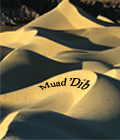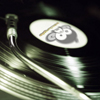 chord progression ?!?! chord progression ?!?! |
kanibalboy 
Cool Producer
 

Registration Date: 28-06-2005
Posts: 166
Helpfulness rating:
 |
|
i have been pillaging all over the internet and youtube trying to teach myself a little about chord progression, and how to choose chords in music. i have come across the cirlce of fifths and found out a little about what it is and how to use it and have learned quite a bit on you tube.
but i still cant figure out what chords to play, wich order to play them.
i mainly need to know because i think pads sound so much fuller and richer when played in chords instead of single notes. now, i am decent at making a bassline and melody with some single notes or some arppeggiated notes, keeping within a certain key, or scale if you will,
but how do i choose chords to use in my pads? more over, how to make these chords fit together?
i know there is theory behind all of this, and i am struggling with it. but i guess i was just wondering if any you guys know a couple progressions of 3 or 4 chords that are in key and could be used behind a melody.
you know, chords that might sound dark or epic or angry or moody, for drum n bass.
thx fellas!
|
|
|
21-01-2010 00:59 |
|
|
Pure_bordem
Tourist
 

Registration Date: 27-11-2009
Posts: 36
Helpfulness rating:
 |
|
hahah dude you have no idea what your getting into...my degree is in both music and audio engineering and let me say music theory is one bitch of a subject. Circle of fifths is only going to help you know what sharps or flats you need to put a song into a particular key.
You are correct that most pads will sound more full with chords as opposed to single notes. If your basing your music on the bass then you'll need to choose chords that fit over that bass line. Something to keep in mind, we always assign chords and their names starting from the bass.
Remember scales (most of the time) will have 8 scale degrees. 1-2-3-4-5-6-7-8 with 1 and 8 being the same note displaced by an octave (double or half the fundamental frequency) So if your in C major as your key it would be 1=C, 2=D, 3=E, etc...until you get to 8=C. Another thing to keep in mind the the location of the half steps in the key, each note will two half steps apart except for 3 and 4, as well as 7 and 8, these are only a half step apart
So by that logic a I - V chord progression will have C and G as the bass notes in C major, D and A for G major, etc. Now the I - V chord progression is a major I chord followed by a major V chord, that is indicated by the fact that it is labeled I and not i, the lower case means minor.
The over simplified way to make a major chord is this...start with your bass note lets say C in C major. You will count up 4 half steps from C which will put you at E and then from E you will count up another 3 half steps which puts you at G. So a C major chord is C-E-G, a G major chord is G-B-D. So there you have it, the most basic chord progression I - V in C major.
So did I loose you yet?
This is a very complex subject if you want to have real control over your music and not just be a sample bitch using pre built chord samples but its highly worth learning trust me. The closest thing to a "dark" or moody chord is using a minor or diminished chord, possibly augmented. Minor is going to be the opposite of major, 3 half steps followed by 4 half steps. Diminished is 3 followed by 3 and Augmented is 4 followed by 4.
Remember, after you get your chord built from bottom to top, you now know the notes and you can put them in any order. Examples, C major is C-E-G, but so is E-G-C or G-C-E, these are called inversions, the E-G-C being 1st inversion and G-C-E being second inversion.
There is also the world of extended and altered chords which comes from jazz and they CAN BE very moody but are much much harder to implement since you have at bare minimum 4 notes now in a chord, not 3, usually more like 5 or 6 notes. If you want me to give you a basic intro write up I might do it time permitting, assuming others would find it useful as well.
__
FL Studio, get it here for 10% off
|
|
|
22-01-2010 07:20 |
|
|
Muad'Dib 
Andrejnalin
    

Registration Date: 02-12-2003
Posts: 4,197
Helpfulness rating:
 |
|
Pure_bordem, I'd like to know about those jazz chords aswell.
And, on the question, the easiest way of choosing chords that works for me is this one:
I usually decide whether I want to use only minor, diminished, major or whatever else chords, or mainly those.
Then I try to make a simple progression with single notes with a pad. Say, in 4/4, you make C, D#, G, A# notes on every 1/4th bar. This will be your leading progression, it's the same as following the bass which has these notes.
When I put the fundamental notes, I try to follow some scale (I'm following C minor in this case). Then I go up to every note and try to find chords that will suit the atmosphere of the track I want to achieve, (minor for sadness and darkness, dimished for darkness, major for happyness and power etc.) but making sure that they fit the scale I'm working in! That means, the three notes of the chord all belong to the same scale.
In the example,
Progression: C, D#, G, A#.
The C minor scale is constructed of these notes: C, D, D#, F, G, A, A#, C.
So, root note C, the C minor chord is - C, D#, G; all the notes belong to the C minor scale. So that's ok.
Then we go off to root note D#. You have to choose a chord here, and the suiting one is D# major. So, D#, G, A#; Ok, so we've fitted the second.
Then we go to root note G. G major would be G, B, D, but since B note is not part of C minor scale, we'll have to find another chord. G minor chord goes G, A#, D, which suits our scale perfectly. So we choose G minor for our third chord.
And finally, root note A#. A# minor chord would be A#, C#, F, but it doesn't suit our scale, so we'll try with A# major: A#, D, F. Perfectly suitable.
So, solving the progression with chords, we have: C minor, D# major, G minor, A# major (or: c, D#, g, A#). Don't know how this sounds, this was just an example for you to make sure you harmonically fit within a scale. If you want to fit more minor chords (say 3 minor and one major) then you have to find a suitable scale that will hold them. These mental calculations come quick after a great deal of exercising and working with notes and chords.
Chords are built the way shown by pure bordem up (Major: root note - 4 - 3; minor: root note - 3 - 4; etc.)
Hope this helps a bit. This is all I've taught myself by reading music theory on wikipedia and with several years working with it. 
__
Thinking about becoming an Image-Line/FL Studio customer? Want a 10% reduction in price? Use this affiliate link:
http://affiliate.image-line.com/BADEBDG473
There is no such thing without its opposite
-Bene Gesserit
|
|
|
22-01-2010 13:10 |

|
|
BattleDrone 
2161... the future.
    

Registration Date: 30-12-2005
Posts: 6,413
Helpfulness rating:
 |
|
This might help
Pics included.
__
 Check my soundcloud (exclusive tracks on there) Check my soundcloud (exclusive tracks on there)
|
|
|
22-01-2010 16:43 |

|
|
kanibalboy 
Cool Producer
 

Registration Date: 28-06-2005
Posts: 166
Helpfulness rating:
 |
|
wOw! yep no idea what im gettin into  !!!
!!!
but okay this helps alot. so, C and G are the bass notes in C major cause C is the 1st note of the first 4 halfsteps, and G is the 1st note of the second 3 halfsteps? then you base your two chords off of those 2 notes right and then bam - chord progression? cool!
this is a very complex subject! i am going to learn eventually - i do want control over my music.
so, Muad, thats cool. so i choose a scale first, then make 4 notes within that scale that will be my bassline and main progression.
then i make 3-note-chords out of every note in the progression that fits within the scale - sweet!
http://www.pianoworld.com/fun/vpc/piano_chords.htm
this will help you make chords too!
damn thx guys i will try to put this to practice
|
|
|
22-01-2010 21:37 |
|
|
Muad'Dib 
Andrejnalin
    

Registration Date: 02-12-2003
Posts: 4,197
Helpfulness rating:
 |
|
| quote: |
Originally posted by kanibalboy
so, Muad, thats cool. so i choose a scale first, then make 4 notes within that scale that will be my bassline and main progression.
then i make 3-note-chords out of every note in the progression that fits within the scale - sweet!
|
You don't have to have 4 root based progression, that was just an example. You can have this progression, for instance: C, G, A, C; in 4/4 timing. Or C, G, A, C/F; again, in 4/4 but you can split the last part on two, and use different chords in the different parts. You can also have longer progressions: C, G, A, C, F, B; 6/4. Or shorter ones: C, G, A; 3/4 or 3/3.
Experiment and read a lot! Glad I've been of help. 
__
Thinking about becoming an Image-Line/FL Studio customer? Want a 10% reduction in price? Use this affiliate link:
http://affiliate.image-line.com/BADEBDG473
There is no such thing without its opposite
-Bene Gesserit
|
|
|
23-01-2010 05:00 |

|
|
Muad'Dib 
Andrejnalin
    

Registration Date: 02-12-2003
Posts: 4,197
Helpfulness rating:
 |
|
Thank you BD!
__
Thinking about becoming an Image-Line/FL Studio customer? Want a 10% reduction in price? Use this affiliate link:
http://affiliate.image-line.com/BADEBDG473
There is no such thing without its opposite
-Bene Gesserit
|
|
|
23-01-2010 05:02 |

|
|
Muad'Dib 
Andrejnalin
    

Registration Date: 02-12-2003
Posts: 4,197
Helpfulness rating:
 |
|
| quote: |
Originally posted by kanibalboy
but okay this helps alot. so, C and G are the bass notes in C major cause C is the 1st note of the first 4 halfsteps, and G is the 1st note of the second 3 halfsteps? then you base your two chords off of those 2 notes right and then bam - chord progression? cool!
|
Doesn't necessarily need to be so, but it is a usually used progression, yes. The bass/root notes can be any that you choose to be.
__
Thinking about becoming an Image-Line/FL Studio customer? Want a 10% reduction in price? Use this affiliate link:
http://affiliate.image-line.com/BADEBDG473
There is no such thing without its opposite
-Bene Gesserit
|
|
|
23-01-2010 05:04 |

|
|
kanibalboy 
Cool Producer
 

Registration Date: 28-06-2005
Posts: 166
Helpfulness rating:
 |
|
|
okay thx man i actually put this to good use last night. i was able to determine my bass line and the scale its in, then use a utility to find what chords fit within that scale too and i matched em to my bassline. sounded pretty good. im sure that with some practice i will start gettin more and more used to it.
|
|
|
23-01-2010 18:47 |
|
|
brucifer 
Making all the tunes your mum loves


Registration Date: 23-10-2007
Posts: 997
Helpfulness rating:
 |
|
Can this thread be stickied or added to the tutorial thread. Thanks 
Thanks again 'pure bordom' If you get a chance, another tutorial would be greatfully received on here 
__




|
|
|
23-01-2010 22:37 |
|
|
Muad'Dib 
Andrejnalin
    

Registration Date: 02-12-2003
Posts: 4,197
Helpfulness rating:
 |
|
| quote: |
Originally posted by brucifer
Can this thread be stickied or added to the tutorial thread. Thanks 
|
Done. 
__
Thinking about becoming an Image-Line/FL Studio customer? Want a 10% reduction in price? Use this affiliate link:
http://affiliate.image-line.com/BADEBDG473
There is no such thing without its opposite
-Bene Gesserit
|
|
|
23-01-2010 23:21 |

|
|
KILLER_FAN 
sssomebody ssstop me!!!
 

Registration Date: 23-01-2010
Posts: 215
Helpfulness rating:
 |
|
what theory is behind those free notes (this is how i call them) played on top of the pads+bass. let me explain, i think it sounds a bit vague.
so i make my bass, i make the chords for pads and other discrete instruments, and on top of that i want to play some piano notes,not chords but free random notes that belong to the scale i'm in and also sound musically correct. let's say i'm in C major. i have a C E G then a G B D chord. on top of that i want to play my piano progression to make te melody more attractive. it is mus. correct to play every note on that scale? if i play only the chorded notes, but separate, it will result an arp, and if i play some random progress. that sounds good to my ear let's say C D G A E G (came in my mind totally random, i don't know how this really sounds) i want to know if it is correct to play that. would it sound awfull to have the D and A notes on the C E G chord?
it may be offtopic but it's still chord related  . as an example listen to muffler-hear me scream, and subfocus-last jungle.
. as an example listen to muffler-hear me scream, and subfocus-last jungle.
|
|
|
24-01-2010 11:45 |
|
|
Muad'Dib 
Andrejnalin
    

Registration Date: 02-12-2003
Posts: 4,197
Helpfulness rating:
 |
|
Yes, they better be in the scale you're working on so they are harmonically correct with the rest of your song. But doesn't necessarily need to be so every time. Experiment.
Read about counterpoint. http://en.wikipedia.org/wiki/Counterpoint
__
Thinking about becoming an Image-Line/FL Studio customer? Want a 10% reduction in price? Use this affiliate link:
http://affiliate.image-line.com/BADEBDG473
There is no such thing without its opposite
-Bene Gesserit
|
|
|
24-01-2010 12:39 |

|
|
KILLER_FAN 
sssomebody ssstop me!!!
 

Registration Date: 23-01-2010
Posts: 215
Helpfulness rating:
 |
|
|
i would better beat myself with a bat. reading about counterpoint is a real pain for ma brain. better stick for a while to the conventional type of chords making technique.
|
|
|
25-01-2010 16:42 |
|
|
Muad'Dib 
Andrejnalin
    

Registration Date: 02-12-2003
Posts: 4,197
Helpfulness rating:
 |
|
 Yeah, you do that and return to counterpoint when you mastered these things.
Yeah, you do that and return to counterpoint when you mastered these things. 
__
Thinking about becoming an Image-Line/FL Studio customer? Want a 10% reduction in price? Use this affiliate link:
http://affiliate.image-line.com/BADEBDG473
There is no such thing without its opposite
-Bene Gesserit
|
|
|
25-01-2010 19:33 |

|
|
|
